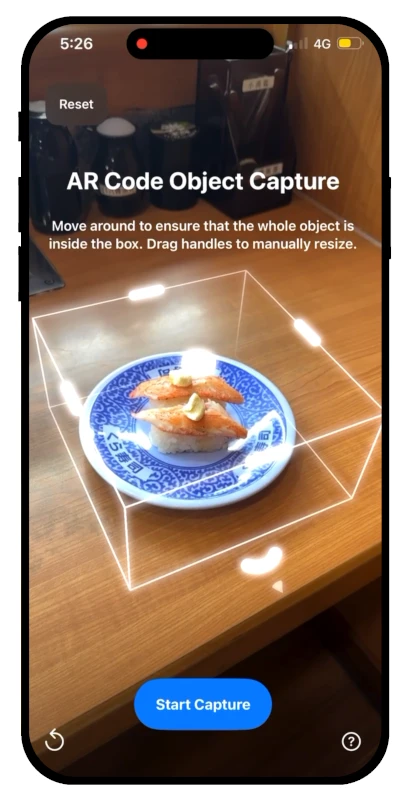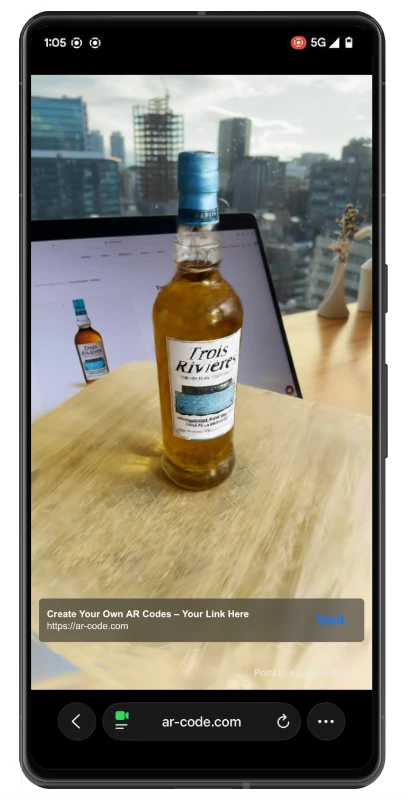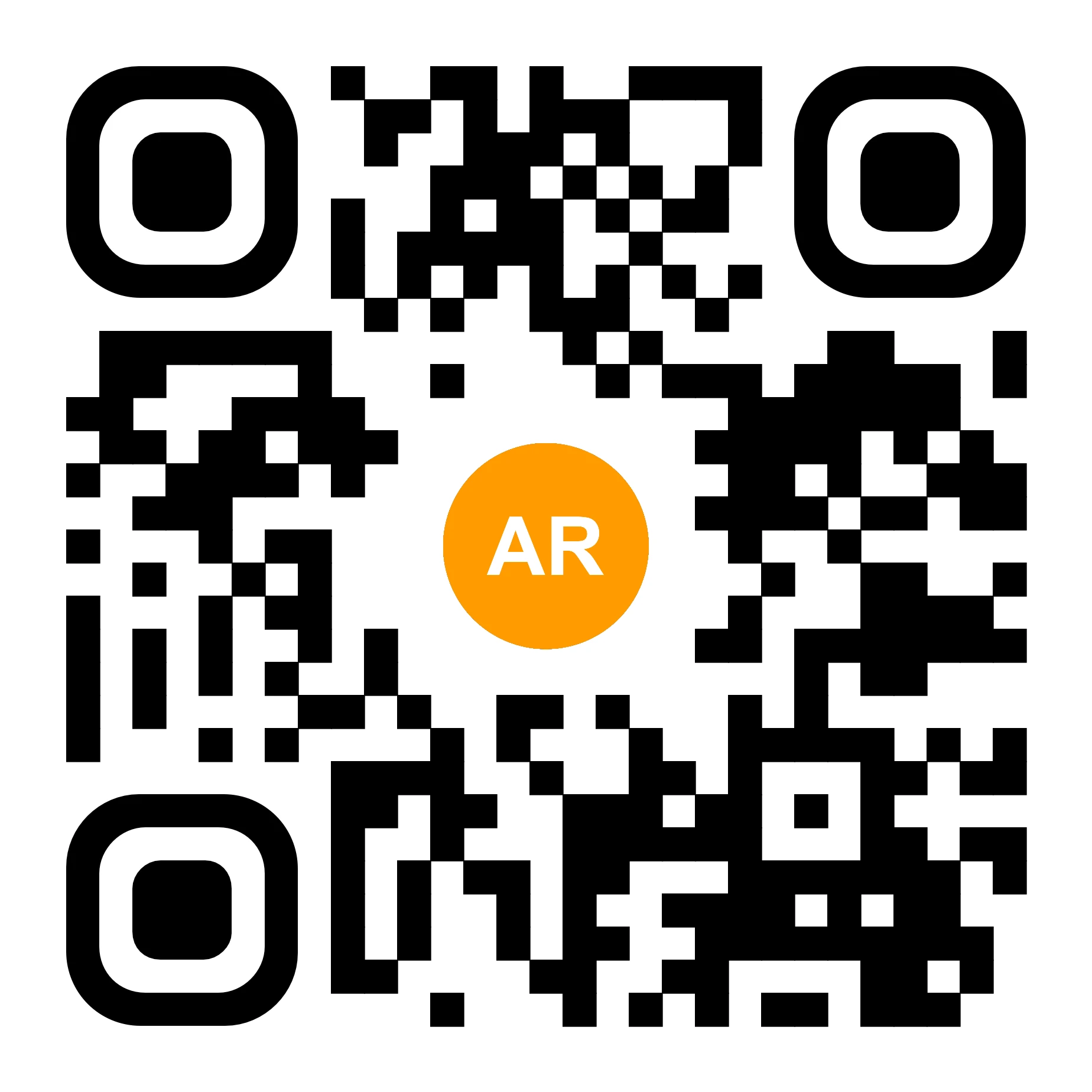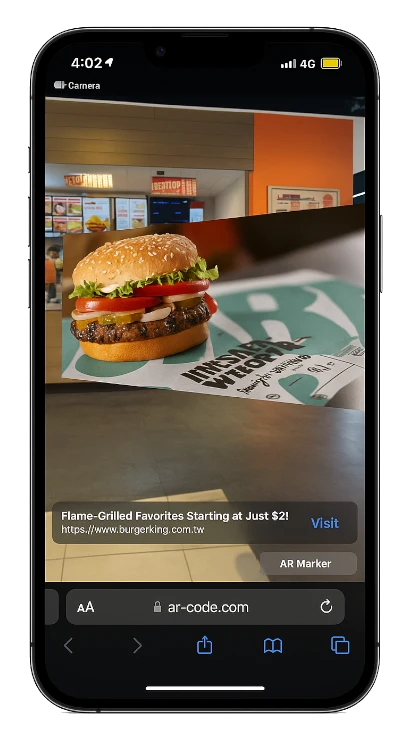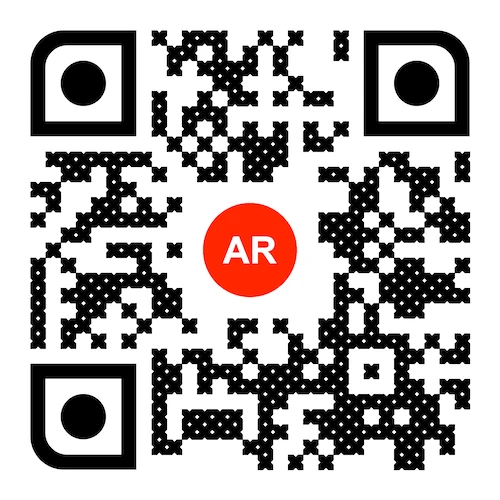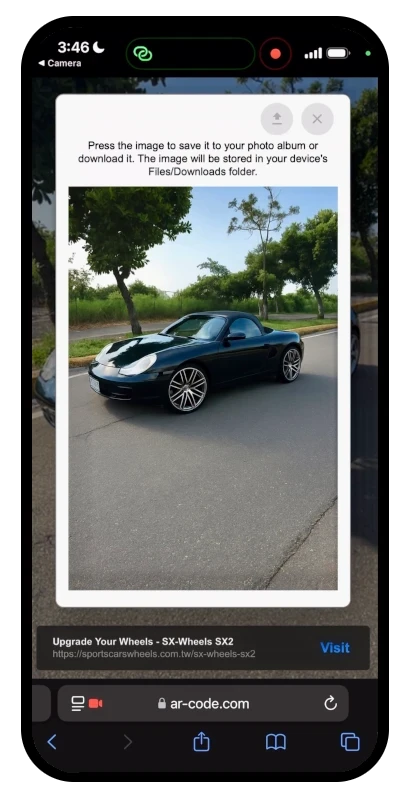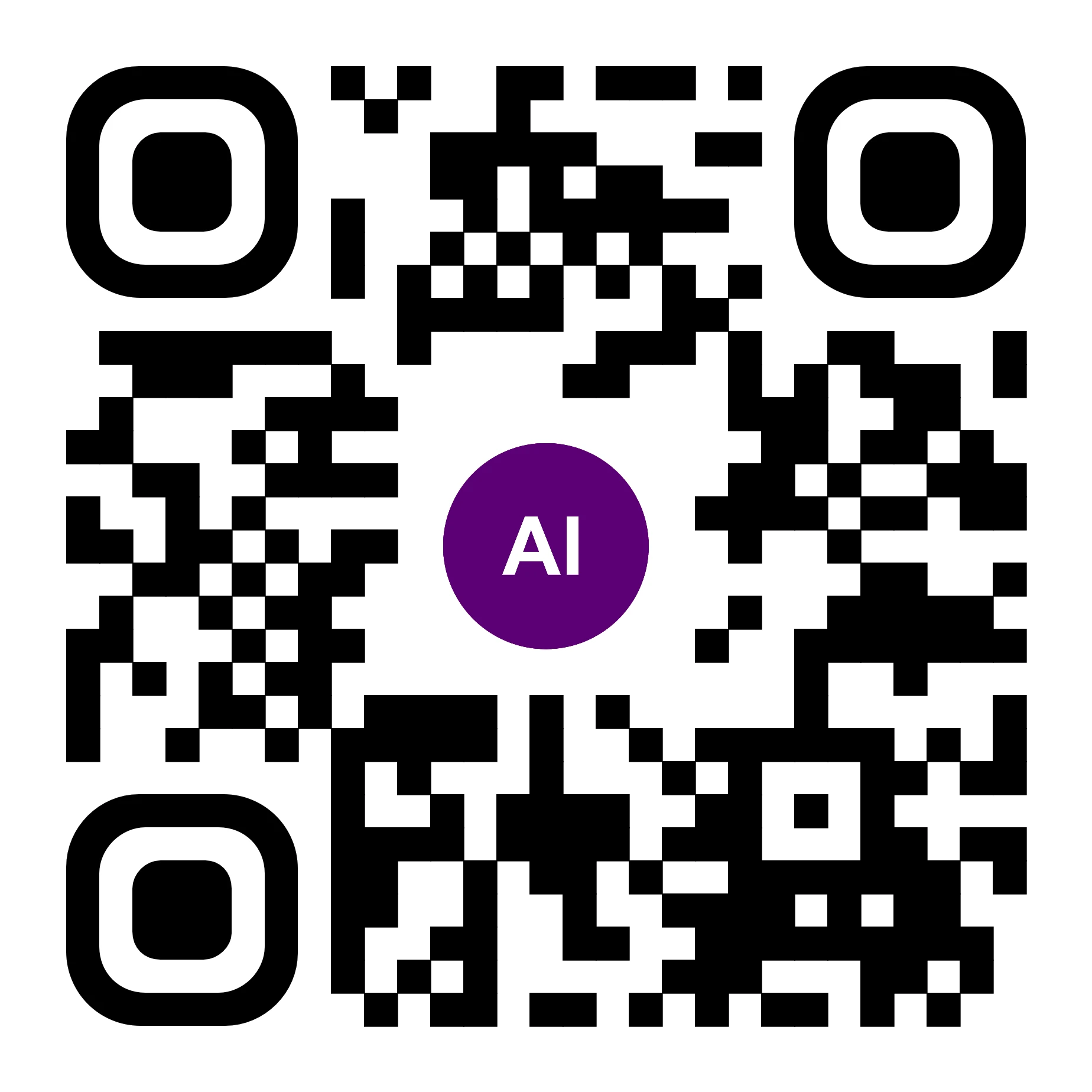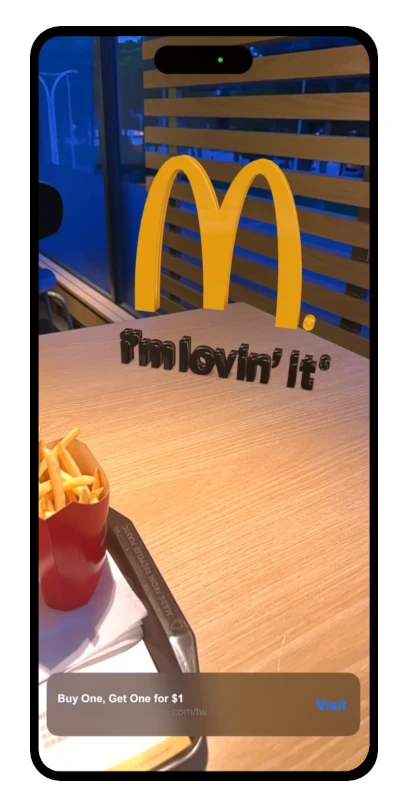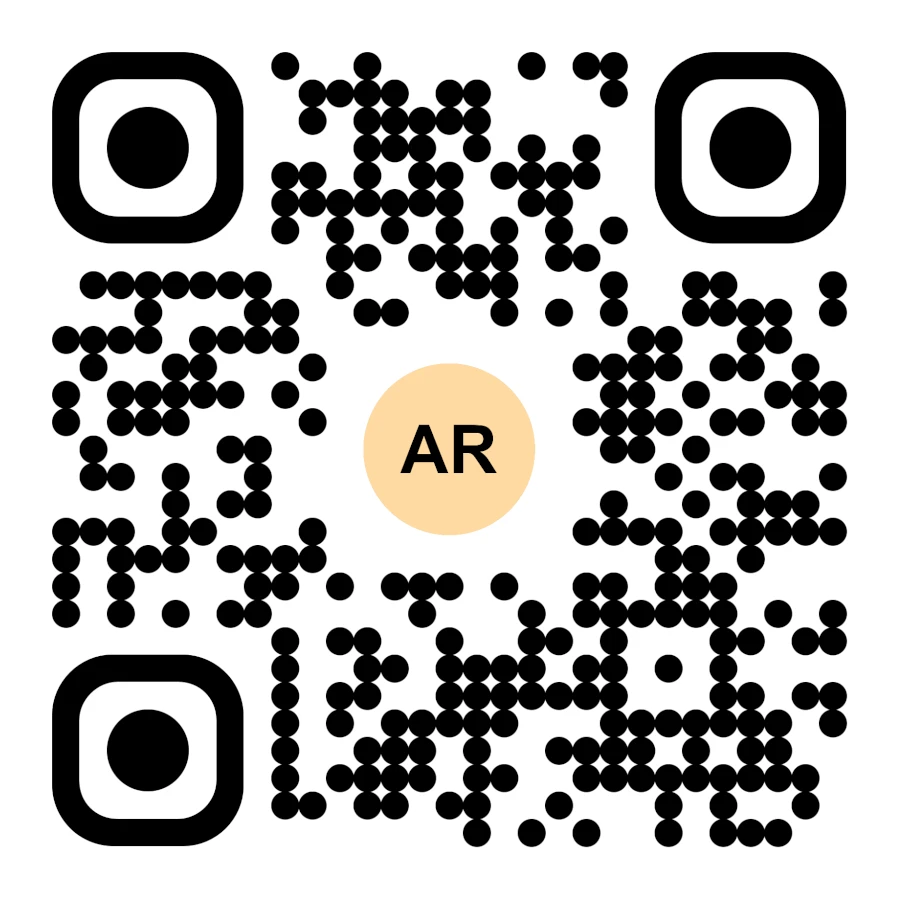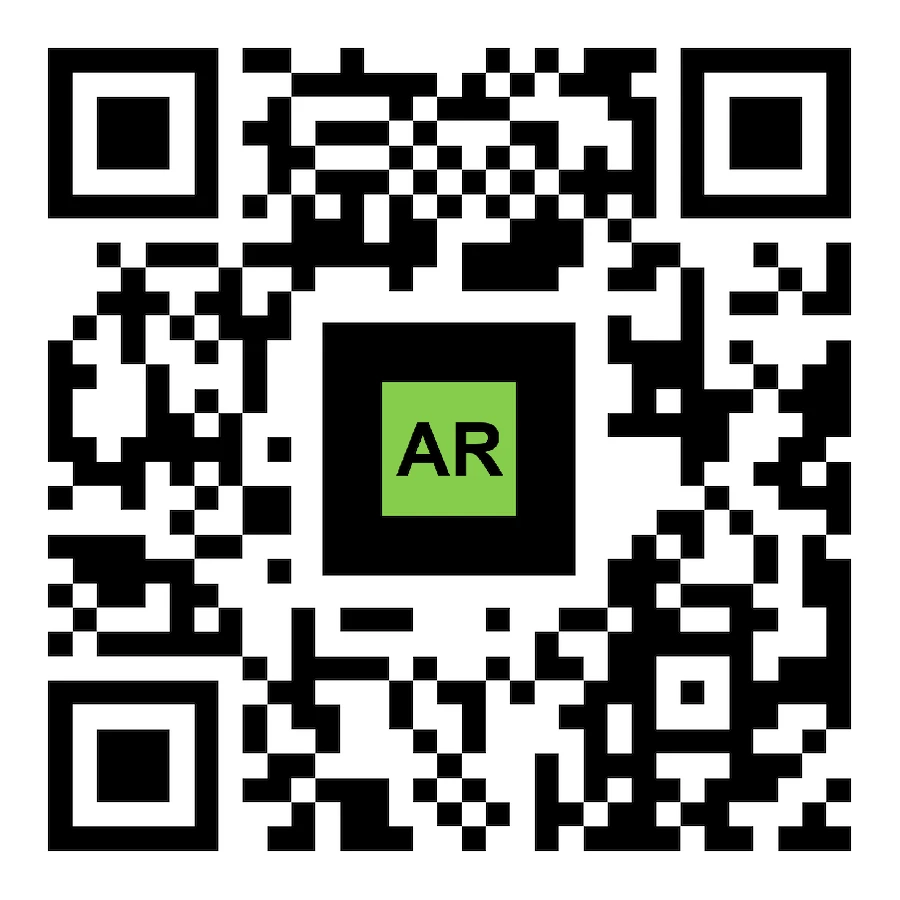Display Remote Text Data on an AR QR Code with the AR Data Feature and Its API
AR Code Tech | 03/12/2025 |
Augmented reality is revolutionizing how businesses operate and boost digital engagement globally. The AR Code AR Data feature lets your business display real-time information via AR QR Codes for any audience, anywhere. This robust AR SaaS platform streams live data in an immersive AR environment, enabling businesses to drive impactful customer experiences and streamline operations. Gain a competitive edge by integrating the powerful AR Code API to automate processes, serve dynamic content, and enhance your brand’s visibility.
Unlock AR Data AR Codes for Business Growth
Leverage AR Code’s AR Data functionality to deliver real-time, dynamic messaging in augmented reality using interactive AR QR Codes. With AR.js and A-Frame technology, your digital data becomes an engaging real-world interaction. Use cases include live data feeds, interactive marketing, and branded customer service. Your business can also track and retarget customers through engaging AR campaigns that boost ROI.
Create and Customize AR Data AR Codes Easily
Creating AR Data AR Codes is quick and intuitive. Enter custom settings and add a password to secure edits. Once generated, your AR Code provides a JSON object with a reference ID and code URL, instantly deployable in any business workflow or digital campaign. Learn more about customizing AR Code experiences to fit your brand.
Modify your AR Data whenever you need through the AR Code web interface or API. This flexible scalability allows your organization to update and expand AR content as you grow, ensuring your messaging is always current and relevant.
To edit via the web interface, simply log in and choose “edit.” With the API, use your reference ID and password to make secure, real-time changes from anywhere.
Powerful Customization Features:
- Font Size: Adjust text size for clear visibility on any device.
- Text Color: Use your brand colors and capture attention instantly.
- Background Size: Control your AR scene’s appearance for a polished effect.
- Background Color: Select background tints that amplify readability and align with your visual identity.
Boost User Engagement and Gain Deep Analytics
Understand your audience using AR Code scan analytics built into the AR Code platform. The API gives you advanced analytics so you can monitor engagement, optimize campaign performance, and clearly measure ROI from AR QR Code scans.
Premium (STANDARD and PRO) plans offer advanced scan tracking and user retargeting, providing actionable insights and marketing intelligence that accelerate growth and customer retention. Gain a complete marketing toolkit with these features.
Top Business Applications for AR Data Codes
Industrial and Manufacturing Transformation
AR Codes drive industrial innovation by delivering real-time access to machinery and sensor data. Maintenance crews get instant insights on equipment throughout your facility, cutting repair times and boosting uptime.
Logistics and Shipment Tracking
Streamline logistics by integrating the AR Data API and adding AR QR Codes to packaging. Give customers and managers instant access to live shipment statuses for complete supply chain transparency and improved customer satisfaction.
Smart Cities and Civic Engagement
Empower city agencies and planners with dynamic AR Codes for smart cities to deliver real-time updates for transit, events, and utilities. AR QR Codes improve access to city services and streamline communication with citizens.
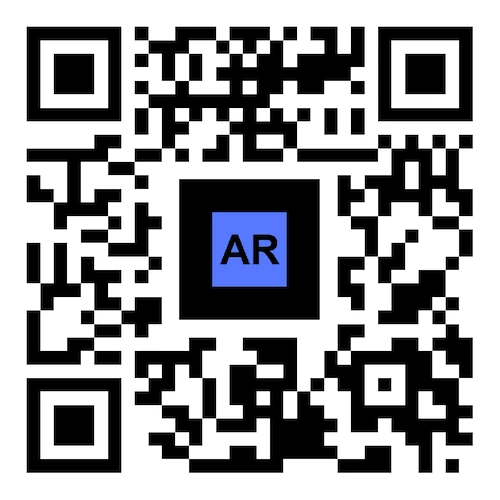
Marketing and Advertising Innovation
Energize marketing campaigns with AR-enabled real-time promotions. Instantly update offers, announce events, or launch time-sensitive ads using AR QR Codes to maintain engagement and increase conversions.
Interactive Education with AR
Schools and museums can engage audiences by using AR Data for interactive exhibits and lessons. Give students and visitors a memorable, hands-on learning experience through AR QR Codes with live updates.
Event Management and Communication
At conferences, trade shows, and events, AR Data AR QR Codes help deliver schedules, news, and updates to attendee smartphones in real time. Keep guests informed and improve event experiences with on-demand access to vital information.
AR Code AR Data: Next-Gen AR SaaS for Business
AR Code’s AR Data bridges real-world touchpoints and live cloud data, setting new standards for digital transformation and customer engagement. Equip your business with advanced AR SaaS solutions to achieve operational excellence and smarter marketing.
Elevate your AR strategies with the AR Code Blog for in-depth industry guides, product updates, and how-to resources. Discover how to scan AR Codes and deploy them for business success to unlock the full value of AR Code’s SaaS platform.
Frequently Asked Questions
What is the AR Data feature in AR Code?
The AR Data feature in AR Code displays live, cloud-based text and data on AR QR Codes using AR.js and A-Frame, creating immersive and interactive business experiences. This tool is essential for delivering real-time communications and driving consumer engagement.
How can I harness an AR Code with AR Data?
Easily set up AR Data AR Codes by choosing font size, color options, and background styles, plus a secure password. The system generates a unique reference ID and AR Code URL, ready for integration into your business workflows or marketing campaigns.
Can AR Data settings be amended post-creation?
Yes. Edit AR Data AR Codes anytime through the AR Code online dashboard or the API. Use your reference ID and password to update content securely and instantly as business needs evolve.
What are practical AR Data feature applications?
AR Data drives innovation in manufacturing, logistics, smart cities, advertising, education, and events. Businesses use it to digitize communications, share real-time information, and boost customer engagement with powerful AR solutions.
How does the AR Data feature boost engagement in smart cities?
In smart cities, AR Data sends real-time updates via AR QR Codes. Citizens and visitors instantly access key info on transit, events, and city services, enhancing individual experiences and communication with urban infrastructure.
AR Code Tech - Latest Blog Posts
AR Splat: A New 3D Scanning-to-Augmented Reality Solution Based on Gaussian Splatting

AR Splat by AR Code is a cutting-edge solution for businesses seeking fast, high-quality 3D scene creation. Upload any walk-around video—AR Splat transforms it into an immersive, photorealistic 3D environment instantly accessible through an AR QR Code. Powered by advanced Gaussian Splatting, AR Splat delivers...
AI Code’s Image Generation Redefines Product Visualization Through a QR Code Scan

AR Code is revolutionizing Augmented Reality (AR) and Artificial Intelligence (AI), providing advanced AI-generated visualizations that instantly engage customers with a QR code scan. Unlock the business value of AI Code for your enterprise and elevate customer interaction through immersive visual...
AR Code Object Capture Now Works on All iPhones and iPads No LiDAR Required
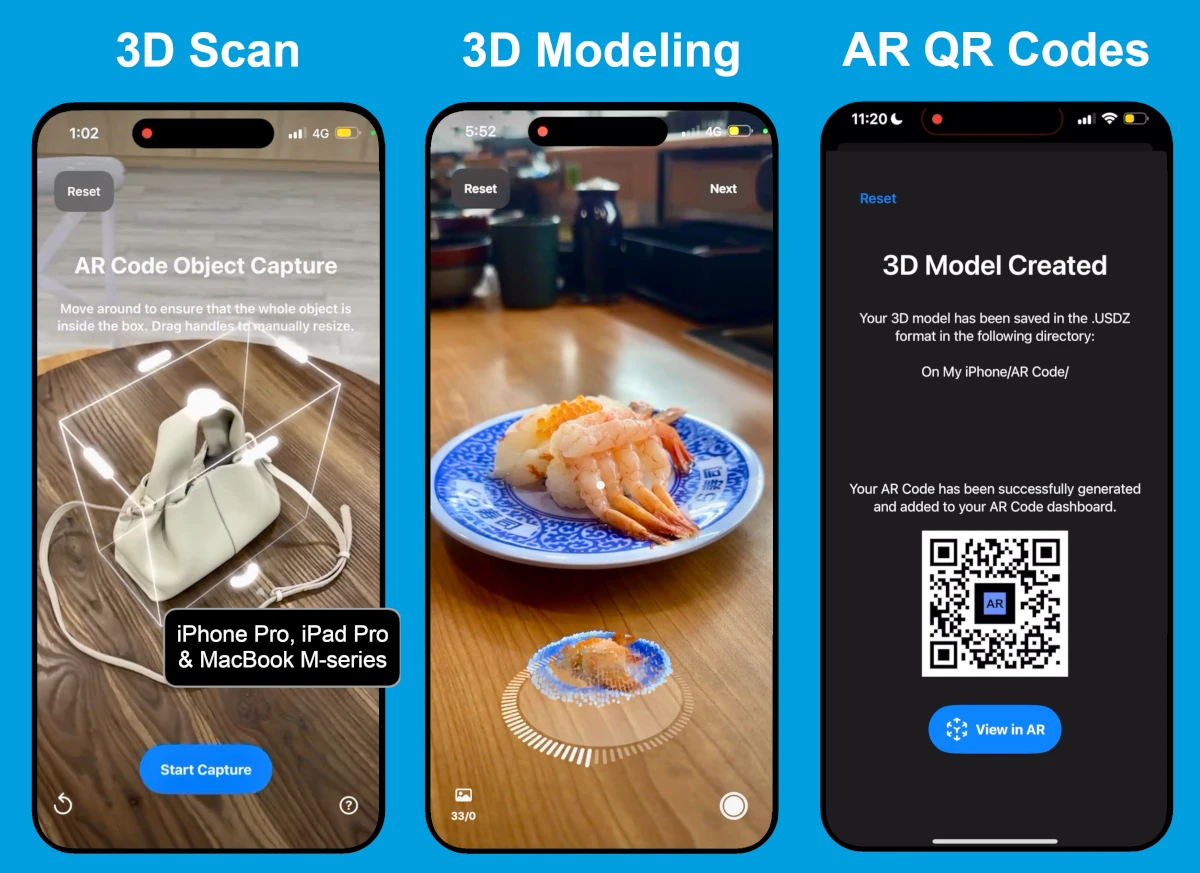
Unlock powerful augmented reality solutions for your business with the AR Code Object Capture app. With support for all iPhones and iPads—even without LiDAR—your team can capture, generate, and deploy impressive 3D models and AR QR Codes instantly, using any Apple device with a camera. Accelerate your digital...
3D Scanning from Video Now Available on the AR Code Web Interface
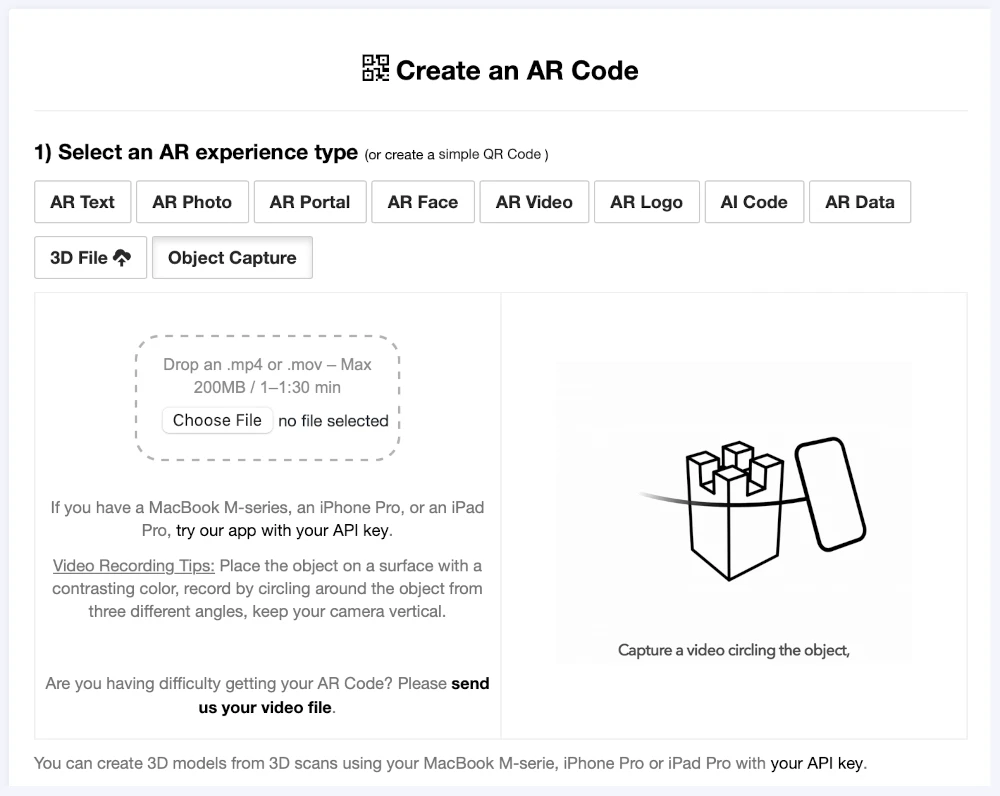
Transform your business with the cutting-edge AR Code Object Capture solution, now accessible through our web platform. Elevate your brand by seamlessly turning video-based 3D scanning into interactive augmented reality content in just a few clicks. Skip complex apps and extra equipment. Simply upload a...
Guide to 3D Scanning with Our "AR Code Object Capture" Solution

Accelerate your business's digital transformation with AR Code Object Capture, the advanced SaaS platform for 3D scanning and augmented reality solutions trusted by leading organizations worldwide. With a powerful, user-friendly interface, quickly generate high-quality 3D models that redefine marketing, online retail,...
From Video to 3D Modeling: Photogrammetry with AR Code Object Capture on MacBook M-Series
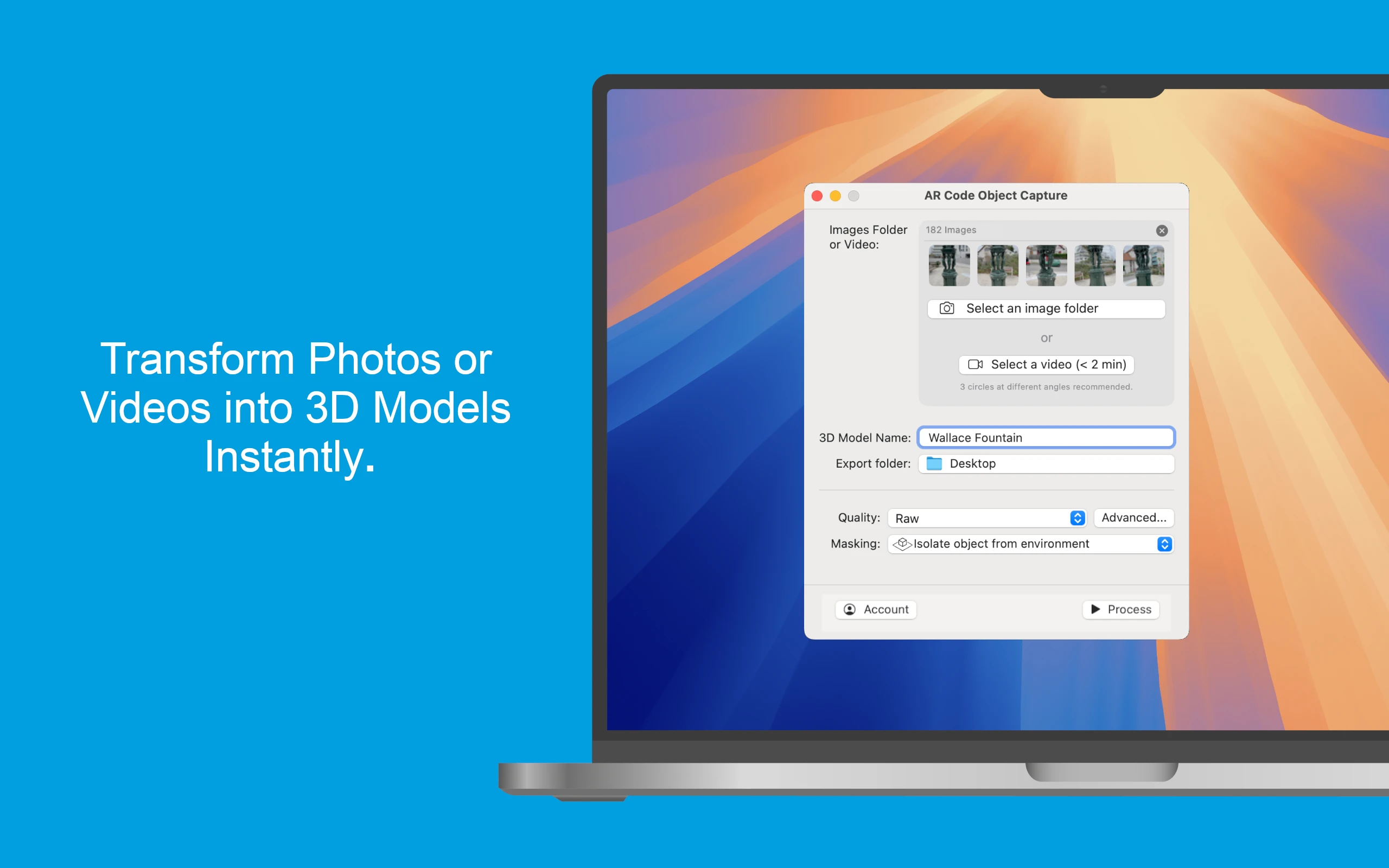
Empower your business with the advanced AR Code Object Capture app, a leader in 3D scanning and augmented reality SaaS for enterprise solutions. Fully optimized for MacBook M-series devices on macOS 15.0+, this application turns real-world products into interactive 3D models and AR QR Codes in minutes. With instant...
Personalize Your AR Codes with Innovative Design Options
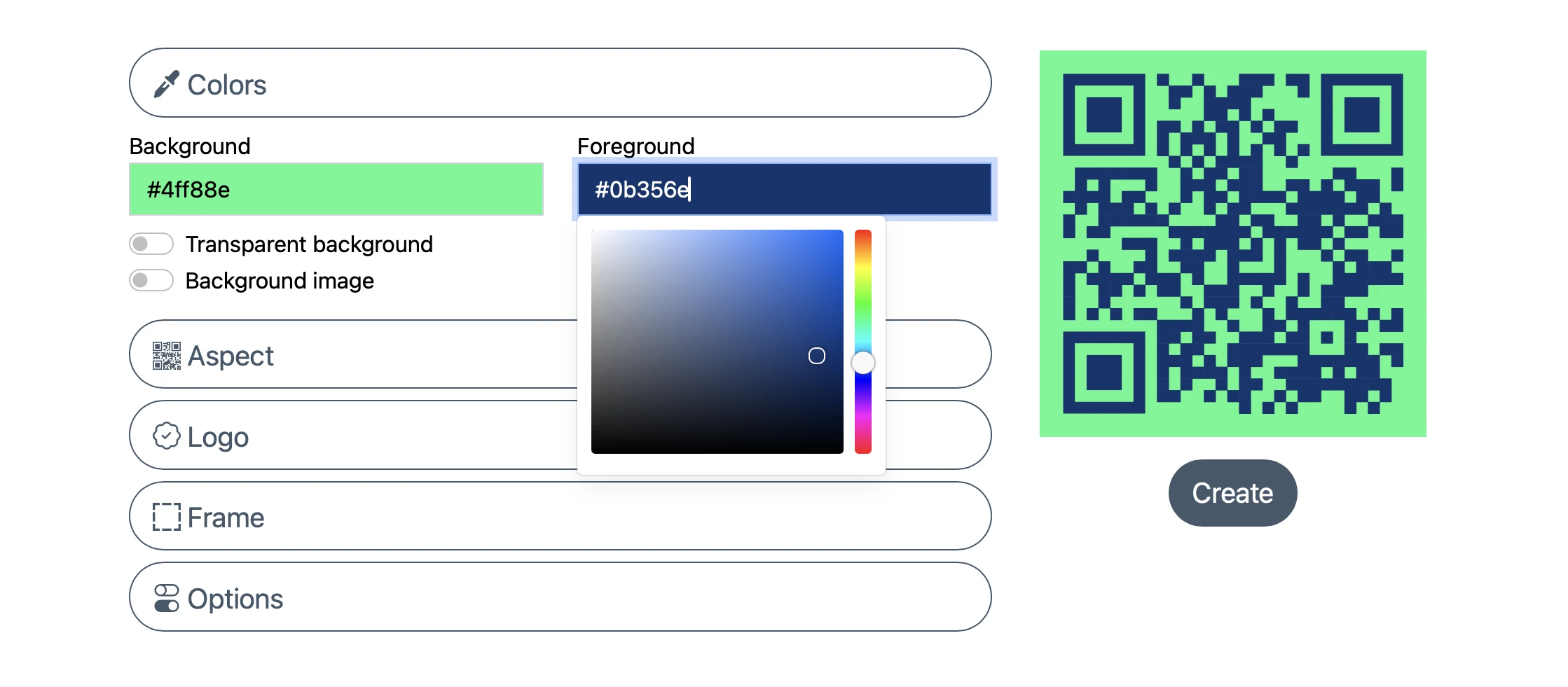
AR Codes are redefining business engagement by merging physical products, print materials, and digital platforms into interactive augmented reality experiences. Unlike traditional QR codes, AR Codes on the AR Code SaaS platform deliver advanced visual customization, transforming standard QR designs into vibrant,...
AR Code's Low-Power SLAM: Augmented Reality for Everyone, Everywhere
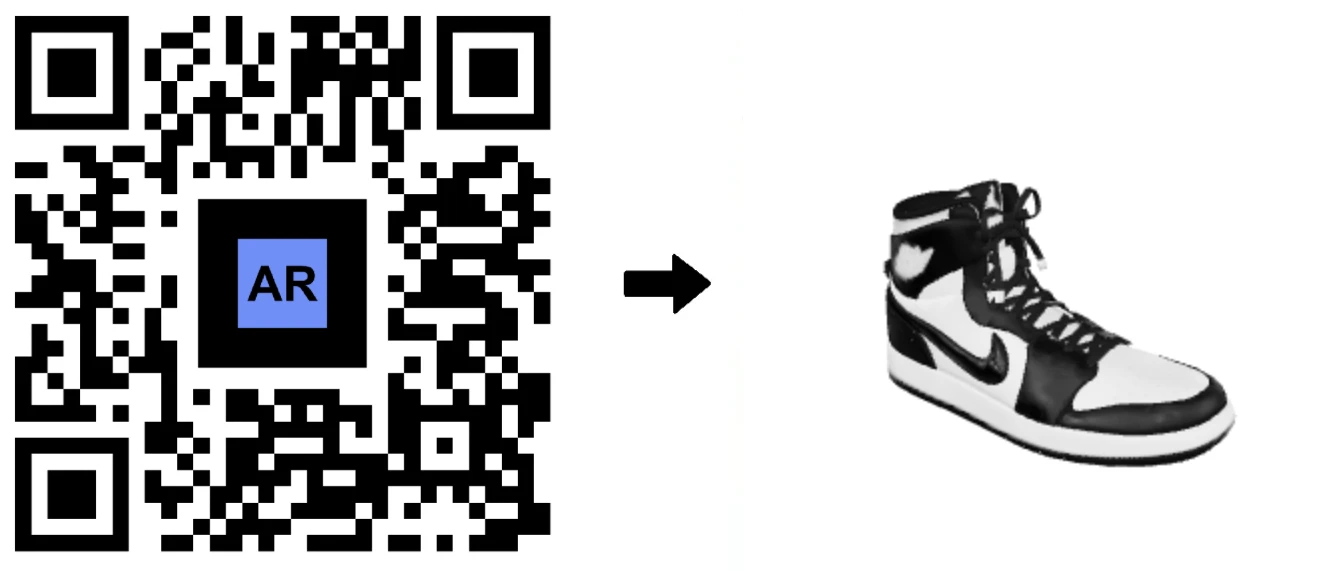
Accelerate your business growth with AR Code, the leading SaaS solution transforming accessibility and engagement in Augmented Reality. The AR Code platform lets companies launch impactful AR experiences across all target audiences, from high-end smartphones to affordable Android devices. Built on advanced low-power...
Revolutionize Your Online Boutique with 3D Scans Using the AR Code Object Capture App

In today’s dynamic e-commerce landscape, creating immersive and interactive shopping experiences is vital for gaining a competitive edge. Modern shoppers expect to engage with products online as realistically as they would in store. AR Code empowers businesses to meet and exceed these expectations using advanced...
AR Face Filter Creation Simplified: Boost Brand Engagement with AR QR Codes
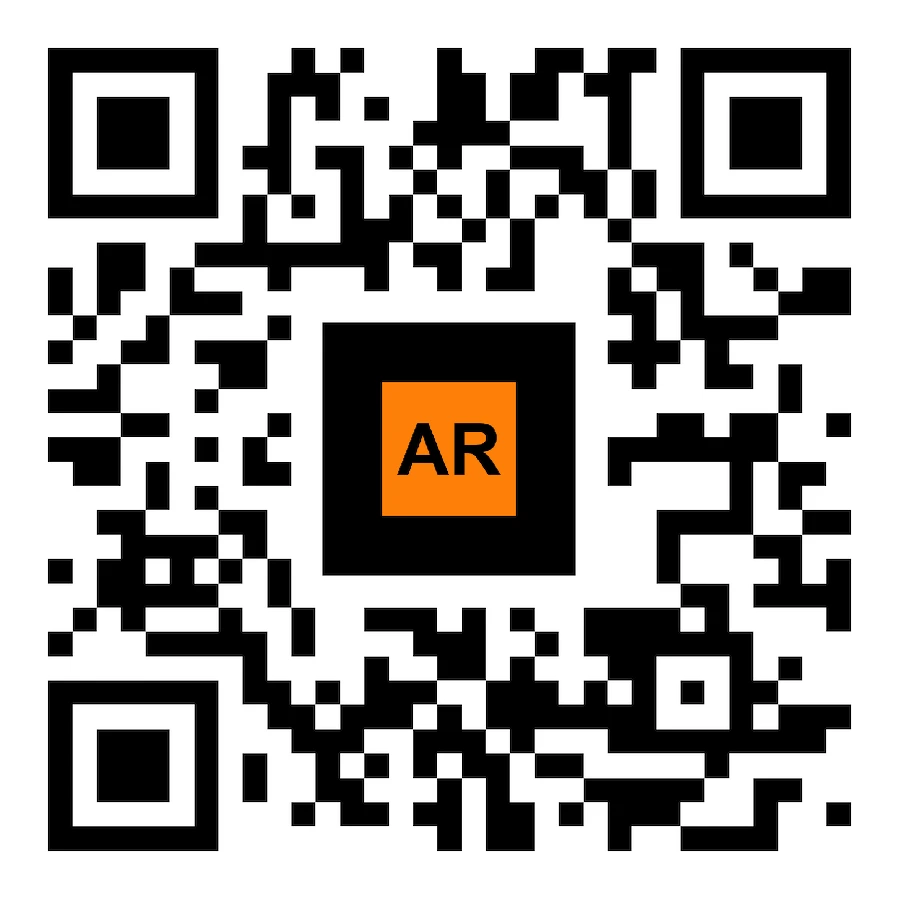
Accelerate your brand’s reach and revolutionize your marketing with AR Face Filter, the leading augmented reality SaaS solution from AR Code. Instantly display your logo or images on users’ faces with advanced AR and AI technology. Ideal for sports teams, event organizers, entertainment venues, and brands focused...
141,242 AR experiences
540,157 Scans per day
127,292 Creators
